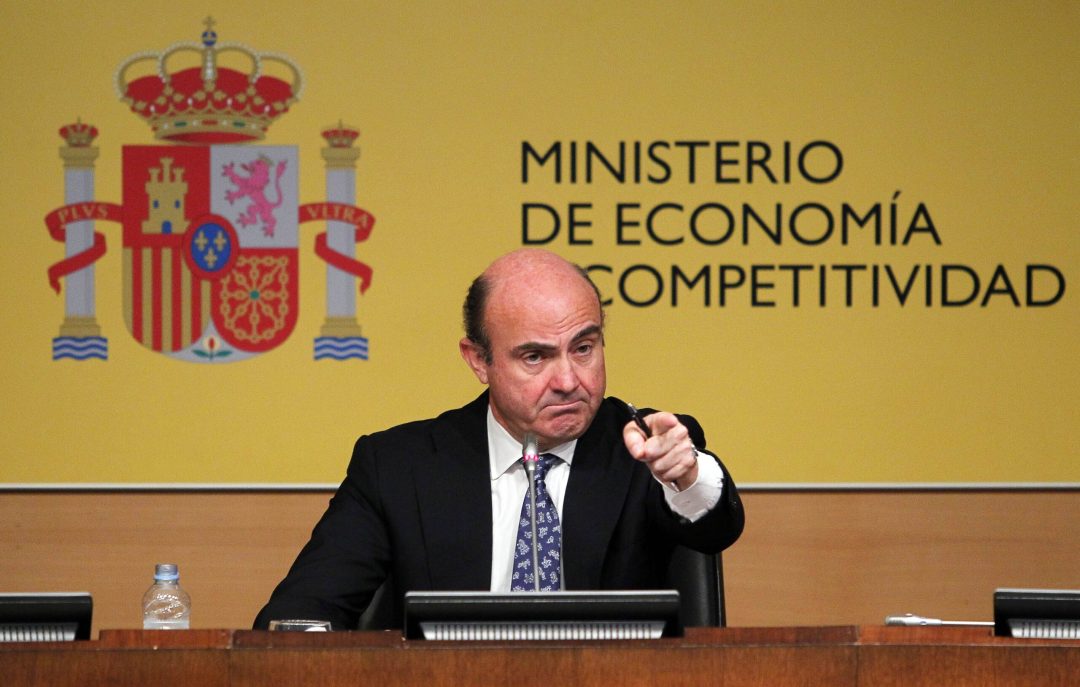
Spanish Prime Minister Mariano Radjoy obtained a $125 billion bailout for Spanish banks, intending to quiet the fears of investors, but the loan has not worked out quite as planned. On June 12th the interest required to float Spain’s long-term bonds jumped to the highest level since Spain joined the euro zone. The rate of interest is 6.8 percent for ten-year loans, which puts these bonds in the sad company of Greece, Ireland and Portugal. One reason is that Spanish taxpayers are the ultimate guarantors of this bailout, which means that the sovereign debt of Spain is now greater than before. The bank bailout did not cede authority over the Spanish budget to international organizations, but the fundamental financial problems remain. The bailout increased the Spanish government debt by a whopping ten percent raising it almost 90% of the gross domestic product of the nation.
Luis Garicano, an economist at the London School of Economics, summed up much of the problem: “Unfortunately Spain didn’t manage to reach one of its main goals in the negotiations, which was to have Europe bear part of the risk of rescuing the financial sector, without letting it fall instead directly onto the shoulders of the Spanish taxpayer. Ultimately, those who lent to our financial system were the banks and insurance companies of Northern Europe, which should bear the consequences of these decisions.”
Xavier Sala Matin, an economist at Columbia University stated that: “The Europeans wanted to put a firewall between Greece and Spain, but they’ve accelerated things in a way that doesn’t at all give confidence to the markets and instead leaves the impression that everything was just improvised rather than planned properly. Everybody moved too fast, based on too little information. The I.M.F. report comes out looking a little bit superficial, and certainly can’t be used to conclude exactly how much money needs to be put on the table.”
Daniel Morris, an analyst at JPMorgan Chase & Company concurred: “When they went for the bailout, in some way you made it worse. Because if they couldn’t come up with the 100 billion euros for the banks, where are they going to come up with the 300 billion euros that they need over the next few years for their own funding? Fundamentally, for all these countries in Europe, they have to find ways to get the economies to grow faster and it really does come back to structural reform. There is no way around it.”
Fitch Rating Service seems to agree. It has downgraded Spanish bonds to junk bond status, which is a drearily familiar pattern among the “PIIGS” bonds. That means future interest payments on bonds will be higher and even raises the specter than the PIIGS governments might have difficulty floating loans. By Wednesday, June 13th, it appeared that the Spanish bank bailout was not working and that the yields on Spanish bonds continued to rise in spite of the intended fix. Moreover, the confidence crisis was creeping into the Italian financial markets as well, where short term bond yields had risen from 2.34% on May 11 to 3.972% in mid-June and Moody’s on June 13 downgraded Spanish bonds from A3 to Baa3, citing increased Spanish government debt and a reduction in the ability of Spain to borrow.
The pending elections in Greece, along with political uncertainty throughout the euro zone and a new government in France, add to the uncertainty which can rattle markets and investors. As the problems of the PIIGS continues to grow and slide into deeper and deeper spirals of crises, the likelihood that more financially responsible governments, like Germany, will be willing to support bailouts or “euro bonds” or some other short term remedy seem less and less likely.
Photo: Spain’s Economy Minister Luis de Guindos gestures during a news conference at the Ministry of Economy and Competitiveness in Madrid, June 9, 2012: AP Images



